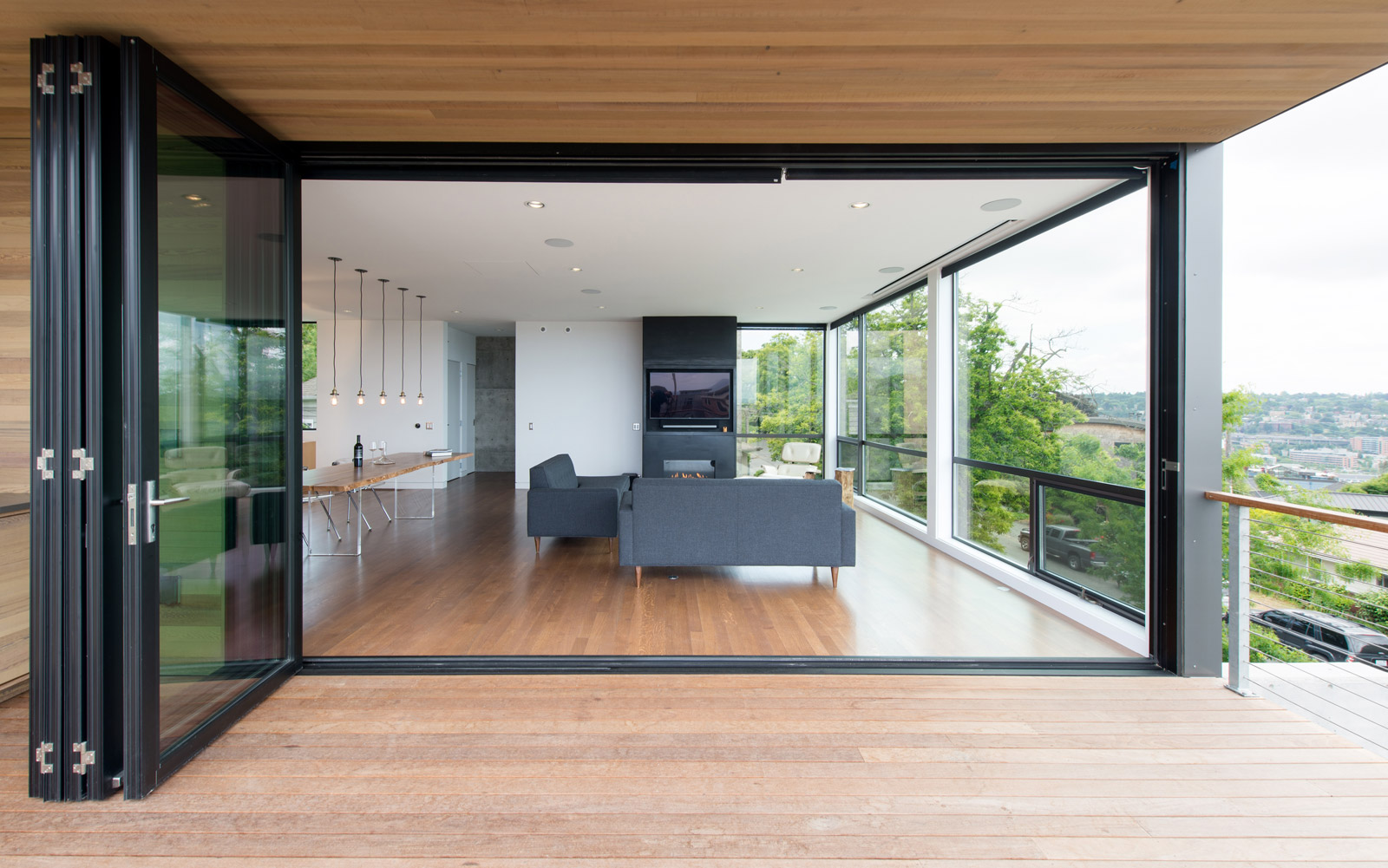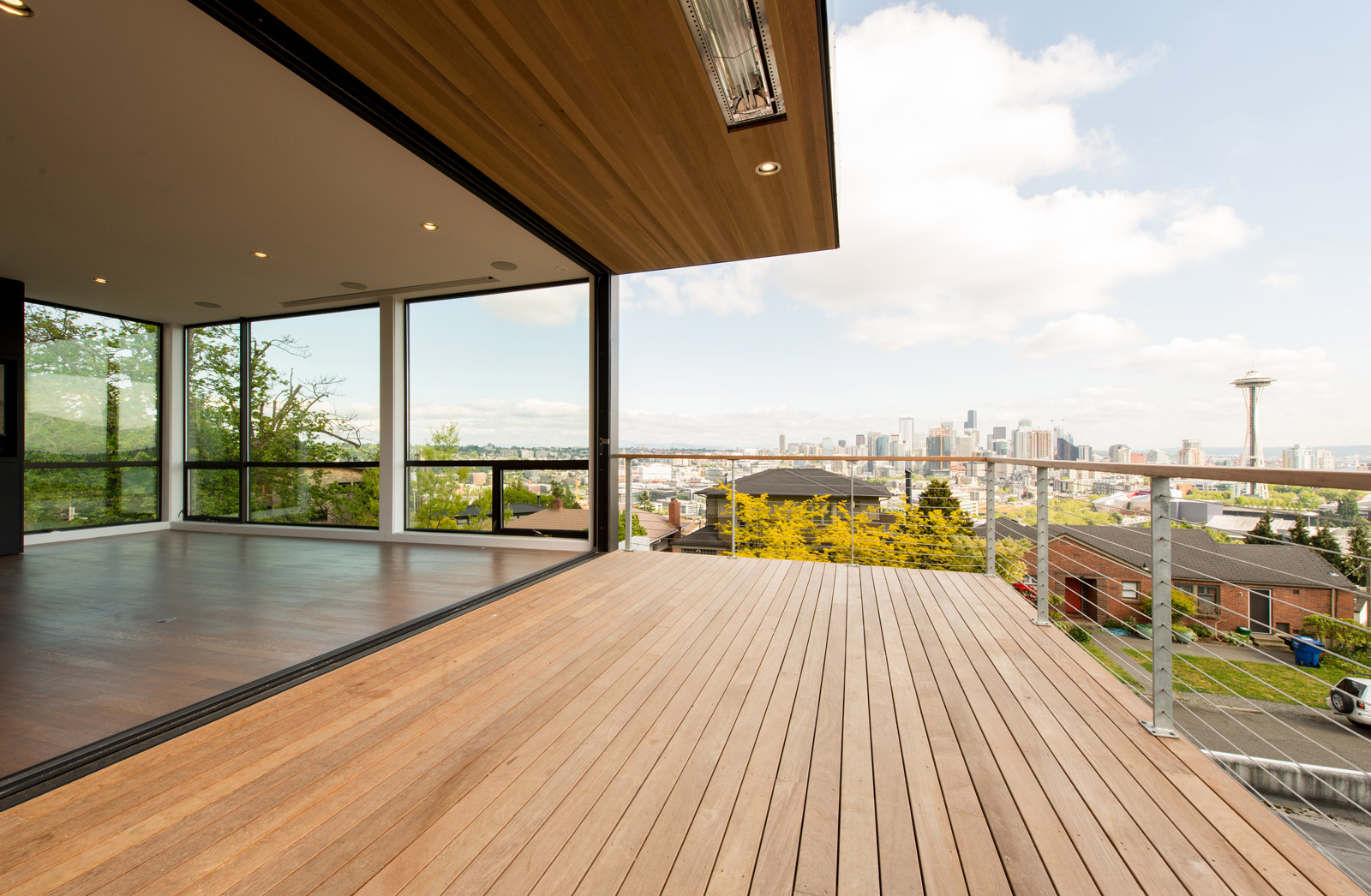
[All photos by BUILD LLC]
We’ve been using certain products for the last couple of years that allow entire rooms to gather generous amounts of natural light throughout the seasons and when the weather turns favorable, these same systems allow indoor rooms to fully open up to the outdoors. It wouldn’t do these products justice to simply call them windows or glass doors. Rather, these are glass walls capable of opening up, or in some scenarios, nearly disappearing altogether. Here in the Pacific Northwest, operable glass walls make a significant lifestyle difference. The low angle of the sun, combined with the short days of winter and fall leaves most of us Seattleites yearning for more natural light. One of the first strategies against this dreary problem is designing floor to ceiling glazing into our projects. This ensures that the interiors are taking advantage of every bit of daylight they can, and reducing reliance on lighting. In the summer and spring, the temperate climate and lack of humidity makes walls nearly obsolete (save for keeping the bugs out). Designing transparent walls that can easily slide open creates a strong relationship between inside and outside, allows for exterior spaces to become outdoor rooms, and provides excellent natural cooling for the interiors. It’s a win-win scenario and today’s post takes a deep dive into these systems along with images from a couple recently completed projects.
Before we get to the pretty pictures, we should eat our spinach and cover some of the terminology behind operable glass walls. Architects and builders are, no doubt, familiar with terms like ‘OXO’ and ‘OXXO’ where the ‘O’ indicates a fixed panel and an ‘X’ indicates an operable panel. This nomenclature is handy when dealing with more complicated configurations like the OXO composition below (left) and the XXO composition below (right).
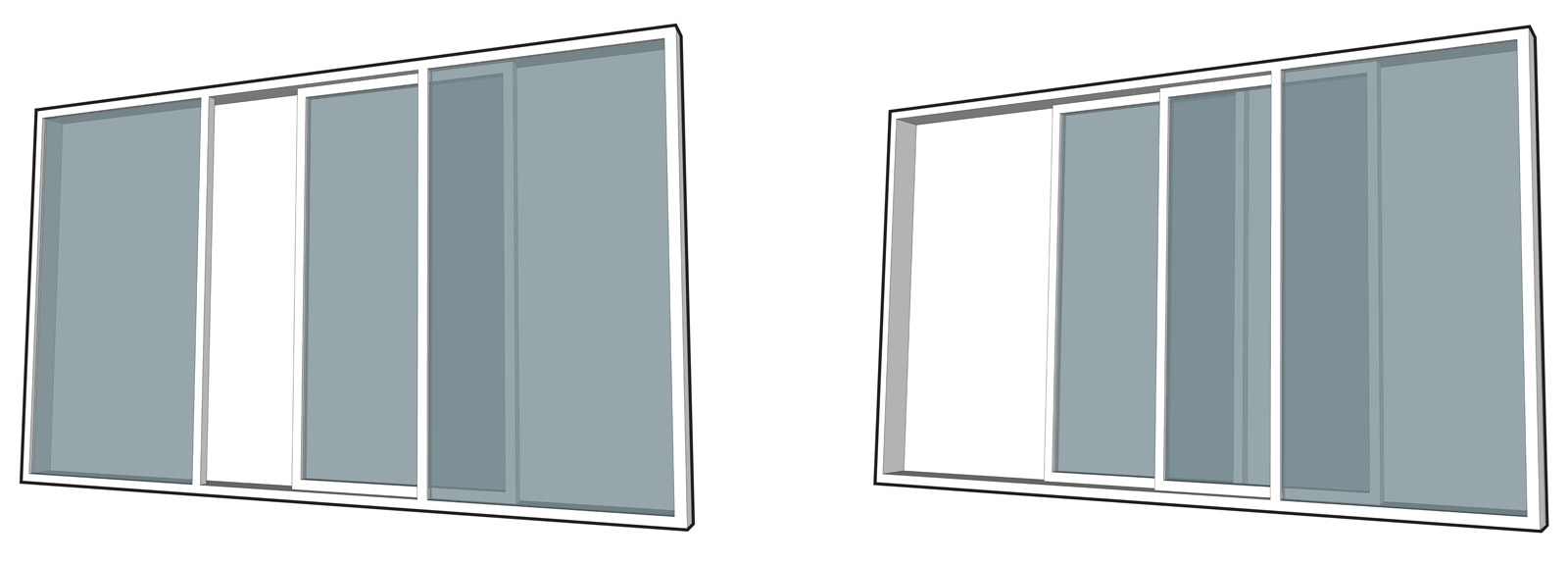
A good example of these sliding glass walls is the Case Study House 2014 (CSH2014). A La Cantina OXX system allows the dining room to open up to an adjacent deck from floor to ceiling. Each of these three panels is 9’-6” tall by 6’-7” wide and while they’re heavy, (it took eight people to lift each panel into place,) they allow for uninterrupted views and optimal natural light.
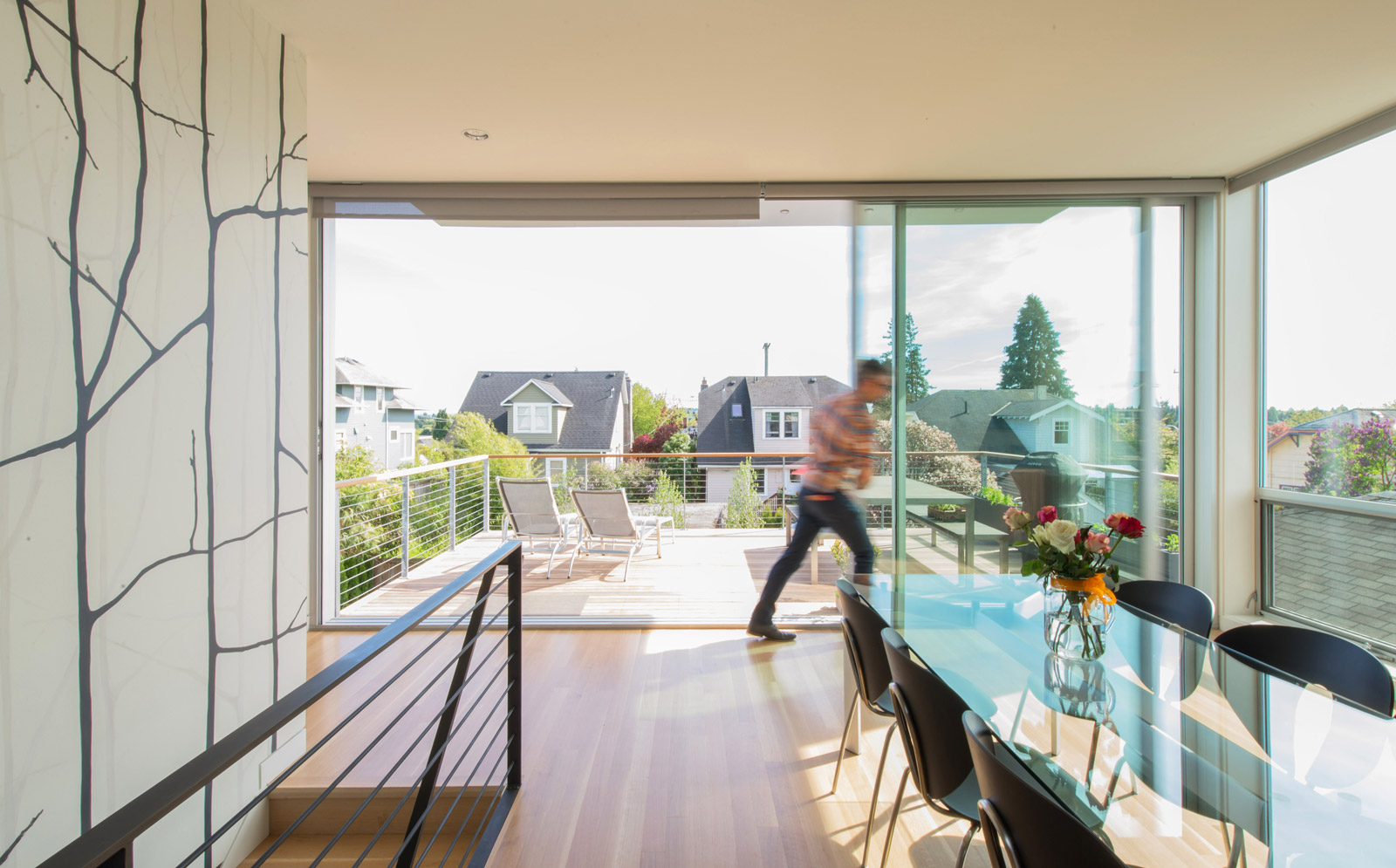
The frames are clear anodized aluminum with double pane Low-E glass panels. An attenuated matching track runs along the floor and ceiling to secure the operable panels and the door hardware is clean and minimal, blending with the surrounding modern lines. The clear opening of this system is approximately 13’-0”. A bug screen can be added to the interior of this composition with another +/-4″ of depth within the system.
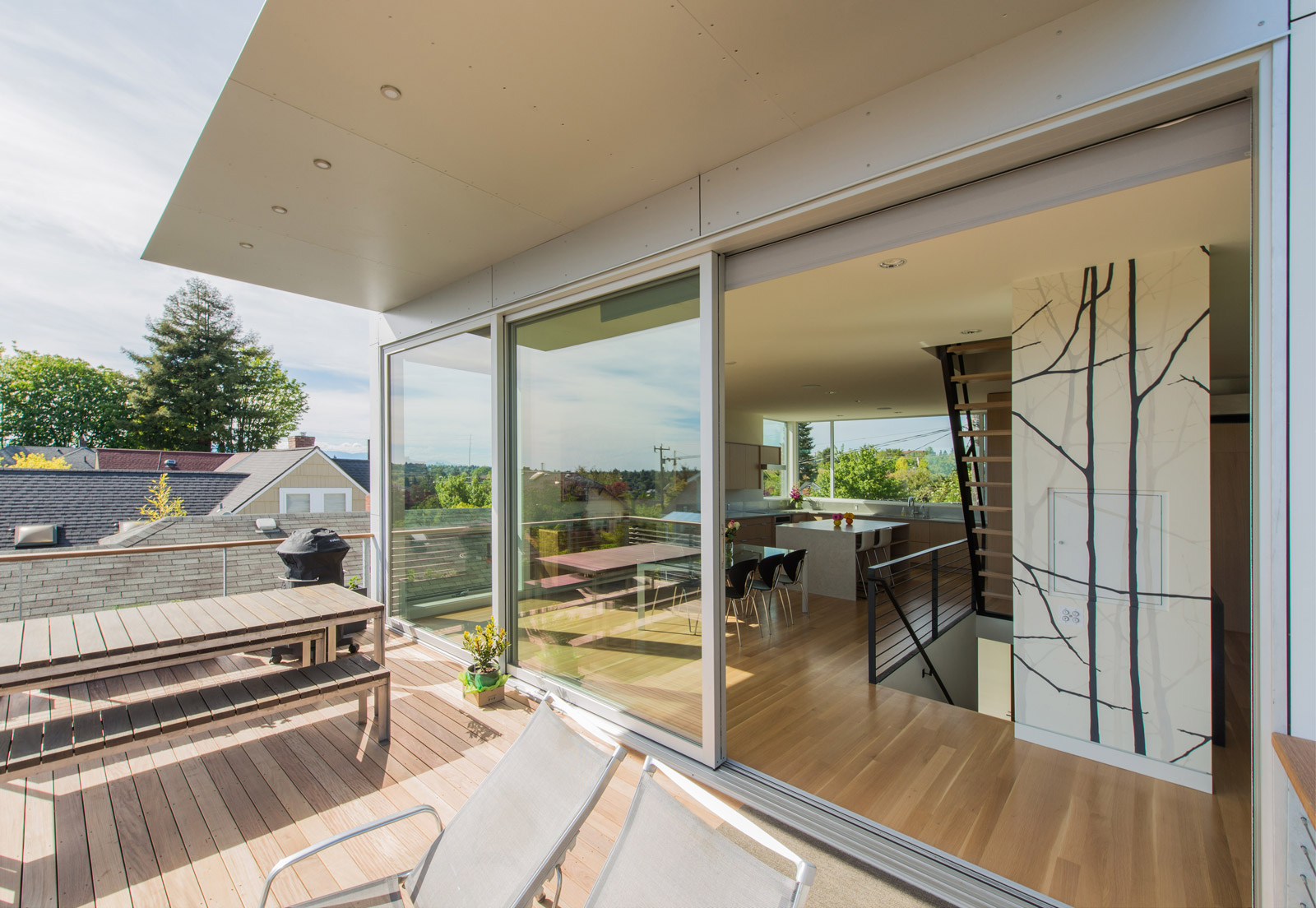
A separate artist studio in back of the CSH2014 opens up to the yard via an OXXO aluminum system from Milgard. These panels are each 3’-4” wide by 6’-7” tall with a clear opening of approximately 6’-8” wide.

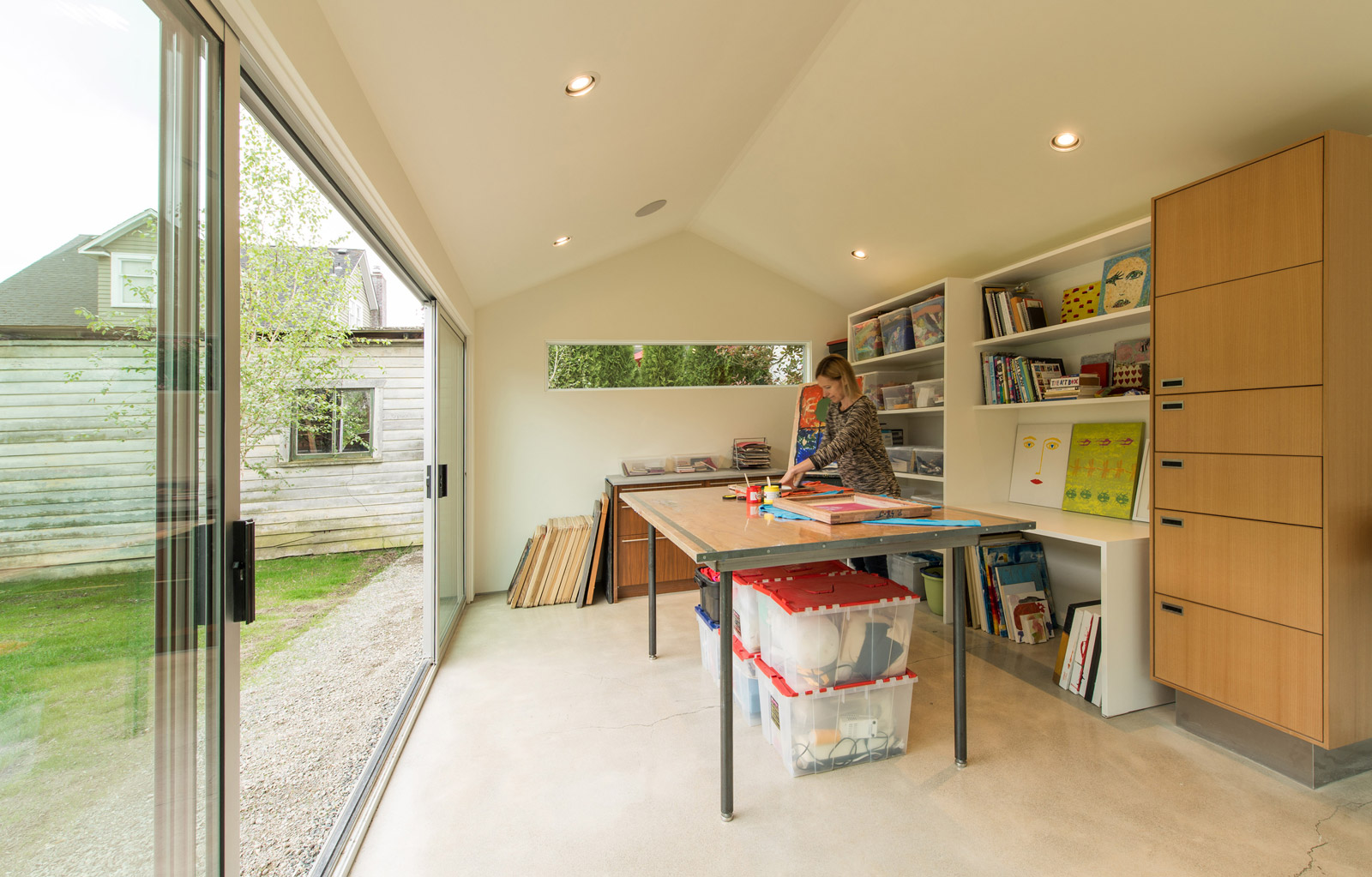
Accordion systems are also an excellent consideration for operable glass walls. The door panels aren’t as wide as the examples covered above, which adds more vertical mullions to the composition, but the tradeoff can be well worth it. Because the door panels fold and slide together, the panels take up less space in their open position, thereby allowing a larger opening as in the Desai Residence below.
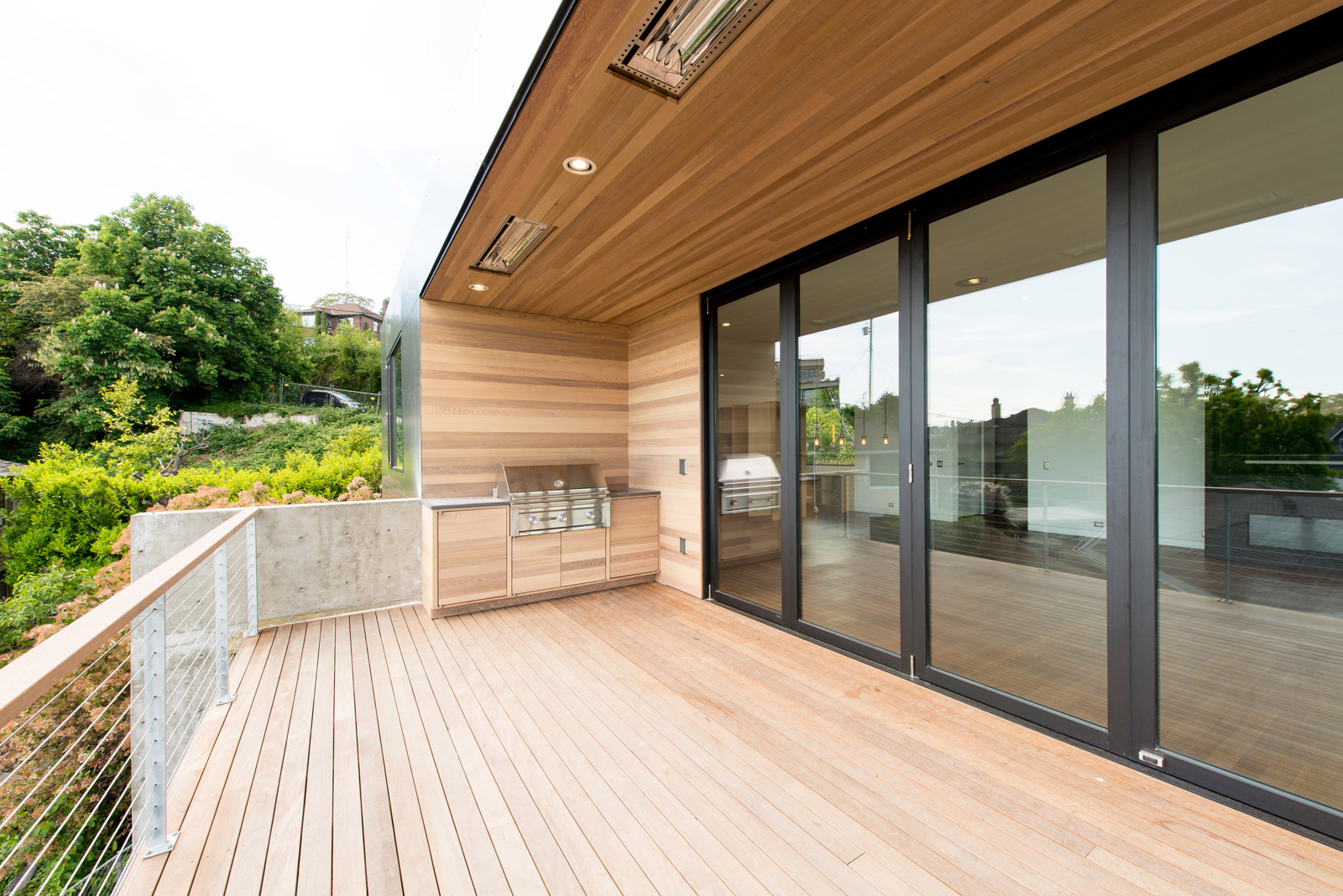
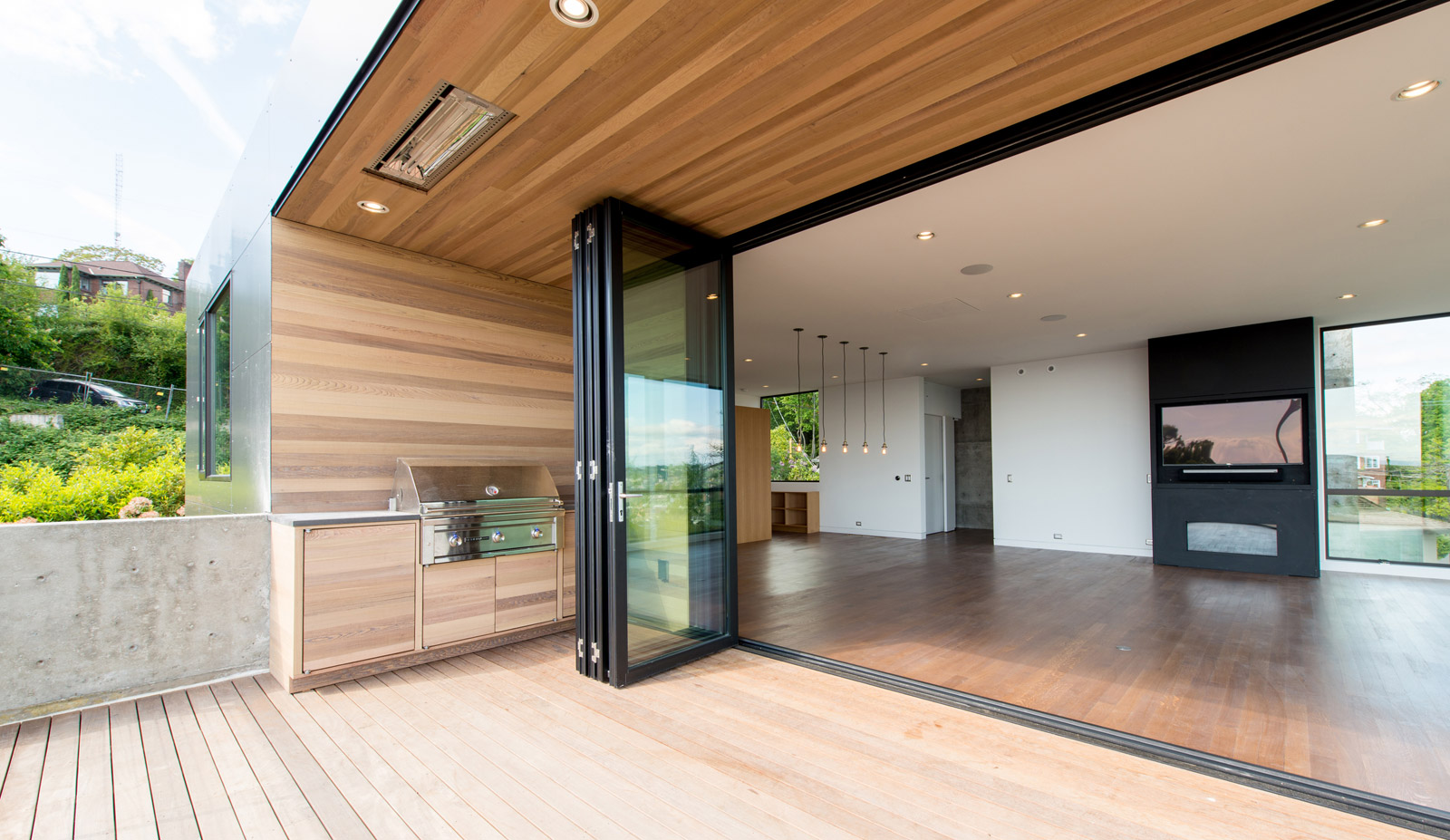
This application uses a 5-panel bronze anodized aluminum panel accordion system by La Cantina where each panel is approximately 3’-3” wide by 8’-10” tall. The clear opening of this composition is approximately 16’-6” minus about 18” for the doors in their open configuration. Bug screens are possible with the accordion systems, although, depending on the clear opening, the length of bug screen (and depth of mechanics) can get a bit cumbersome.
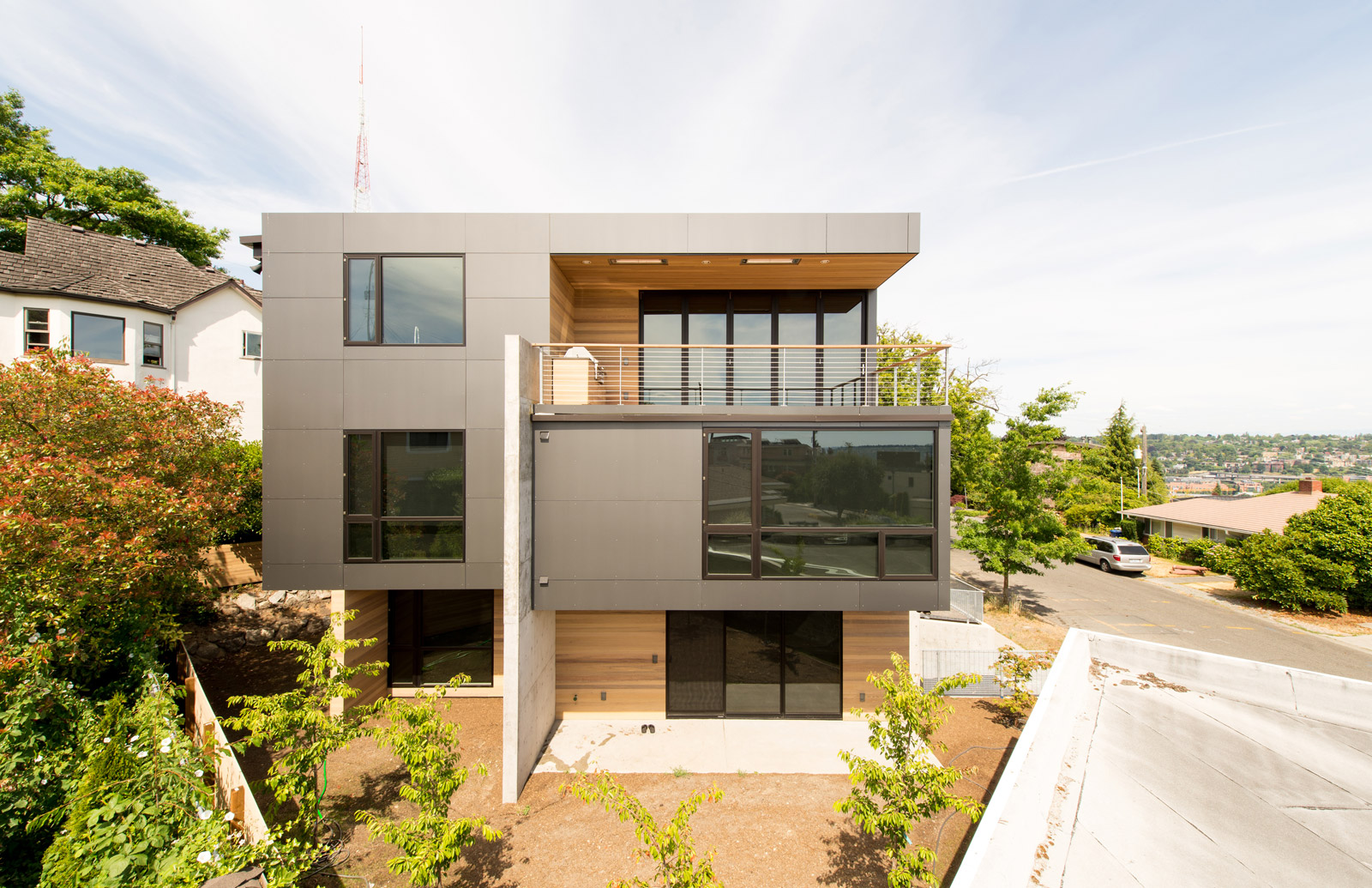
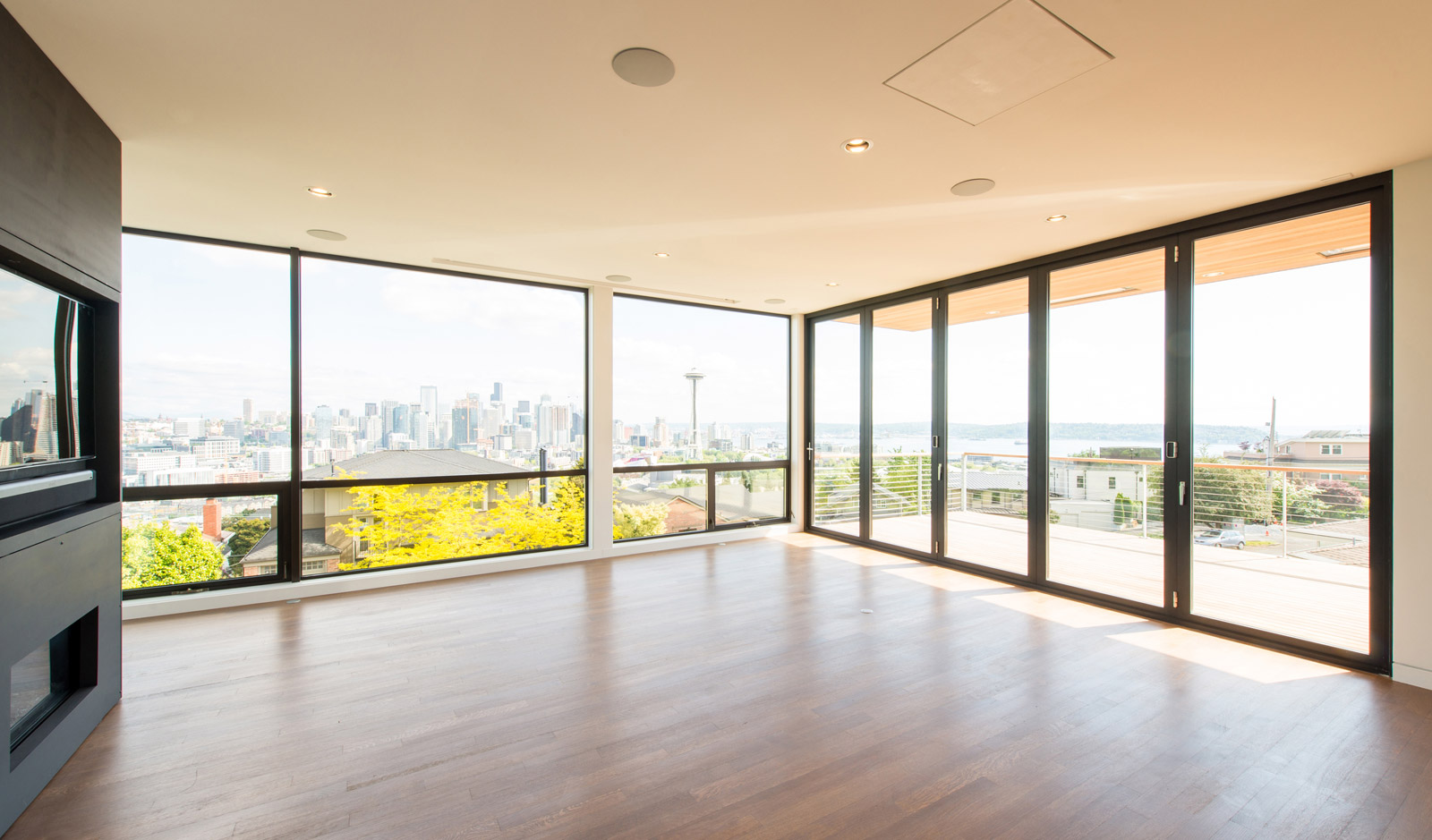
Like the sliders, the accordion system offers a range of permeability. The end panel works just like a single passage door and they entire assembly can be folded up as much or as little as desired.
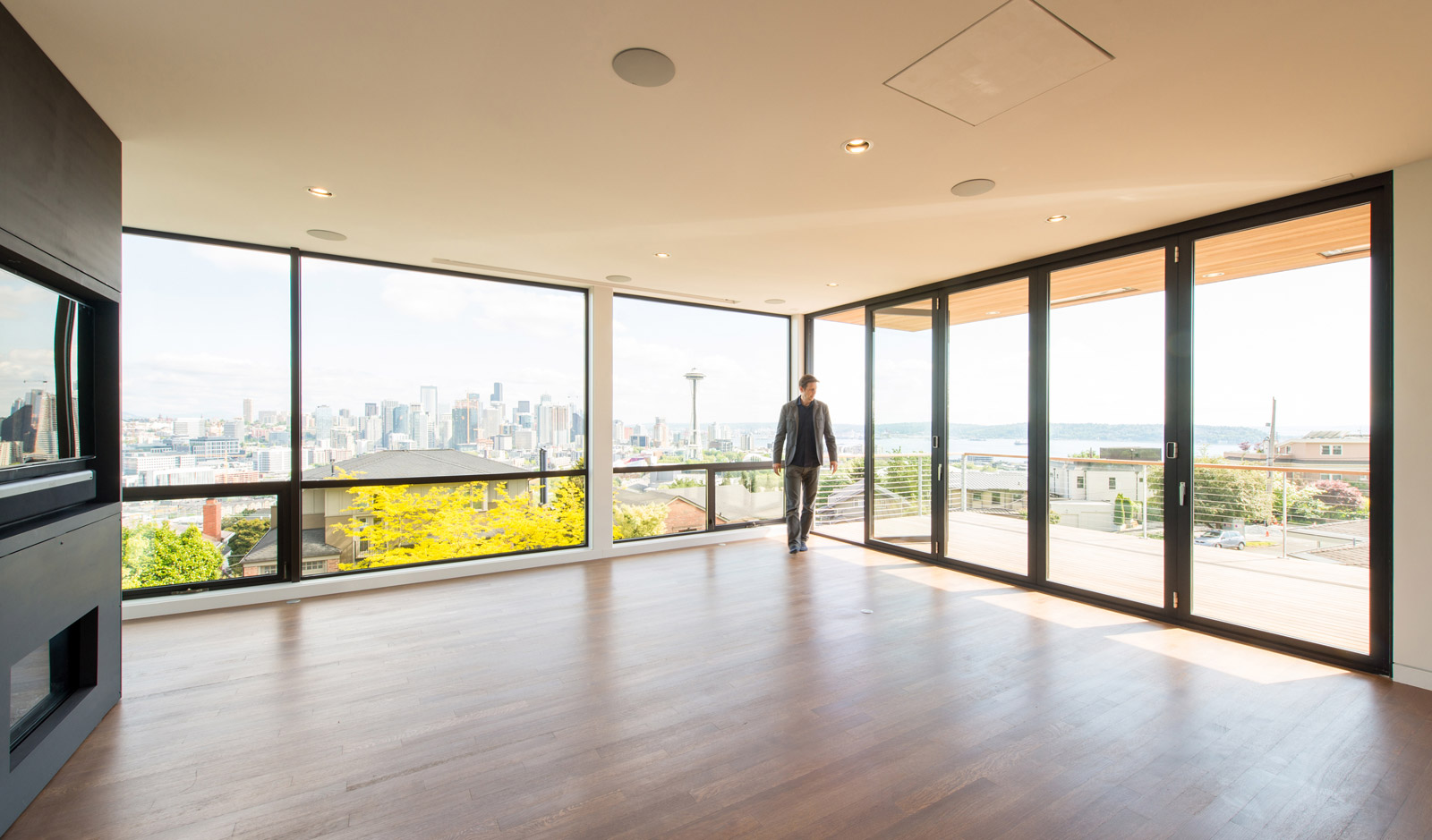
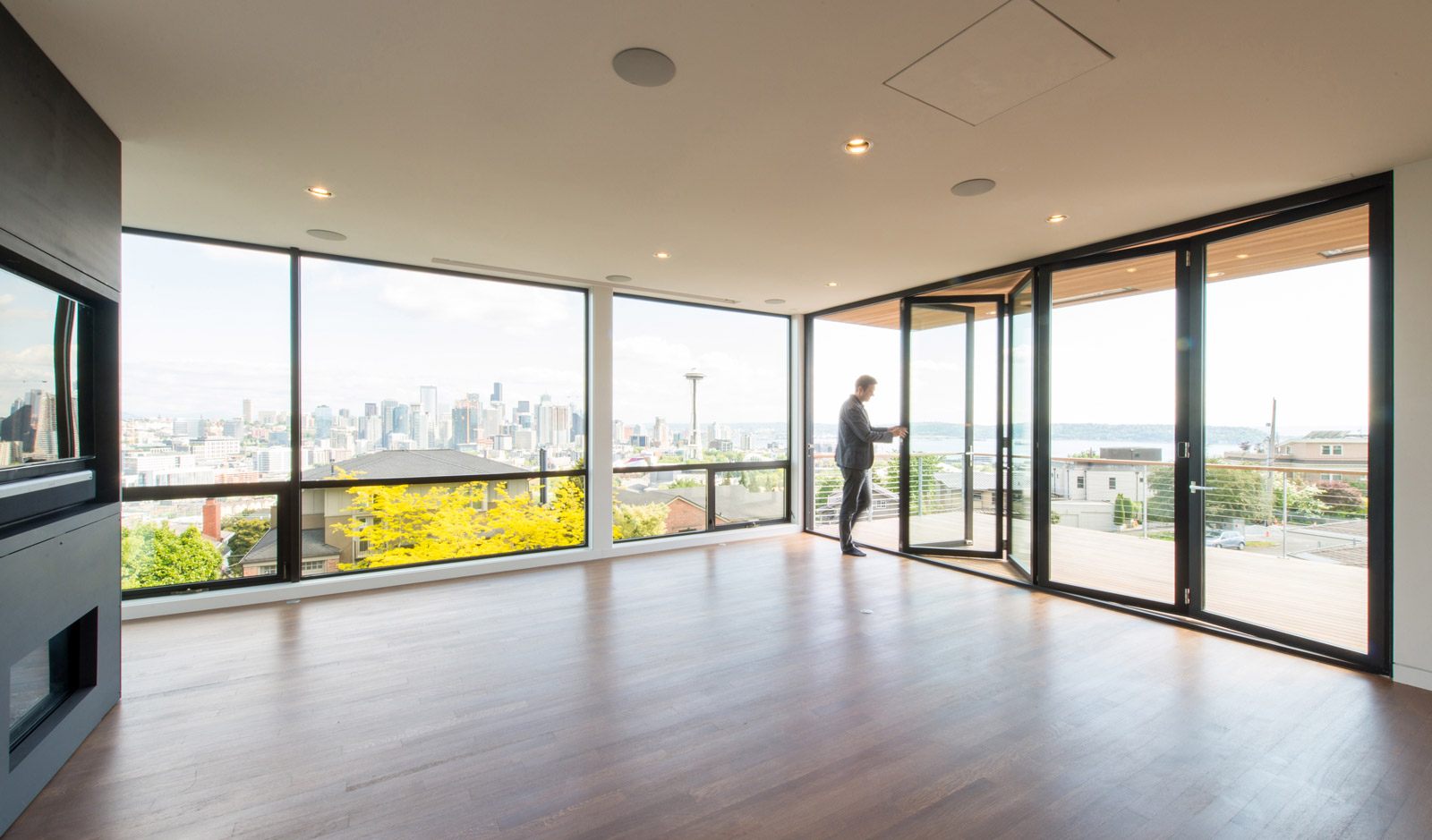
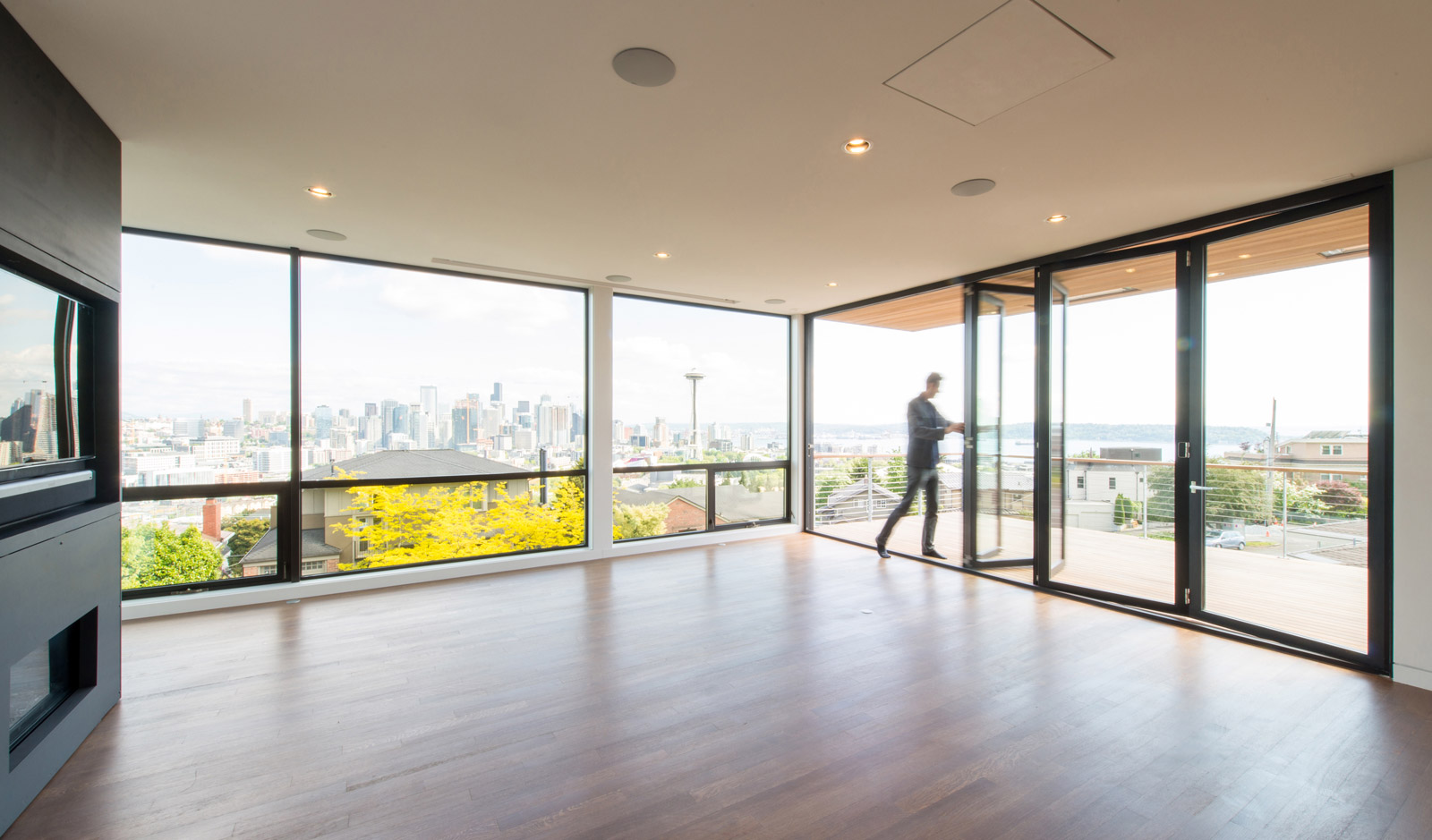

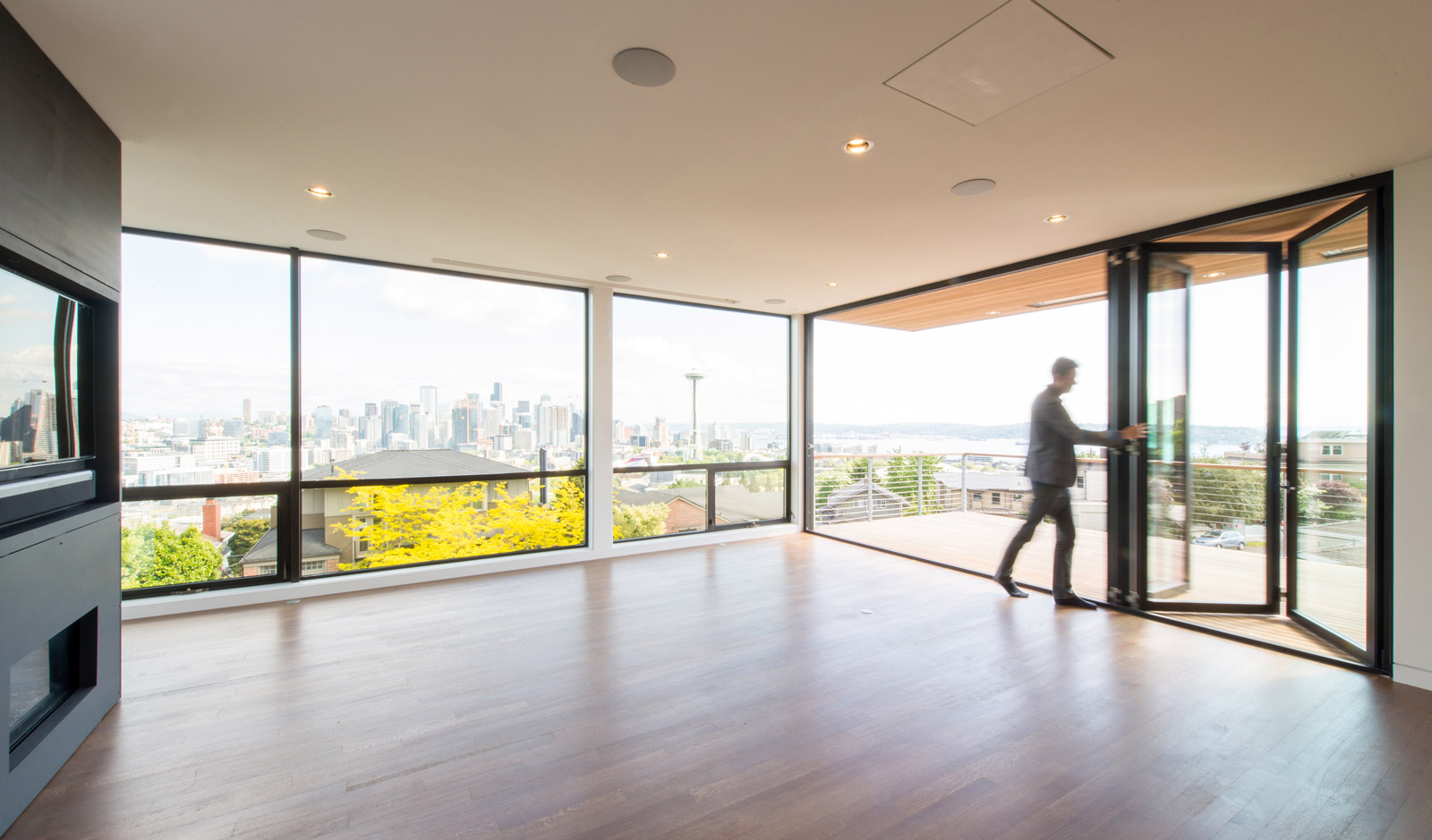
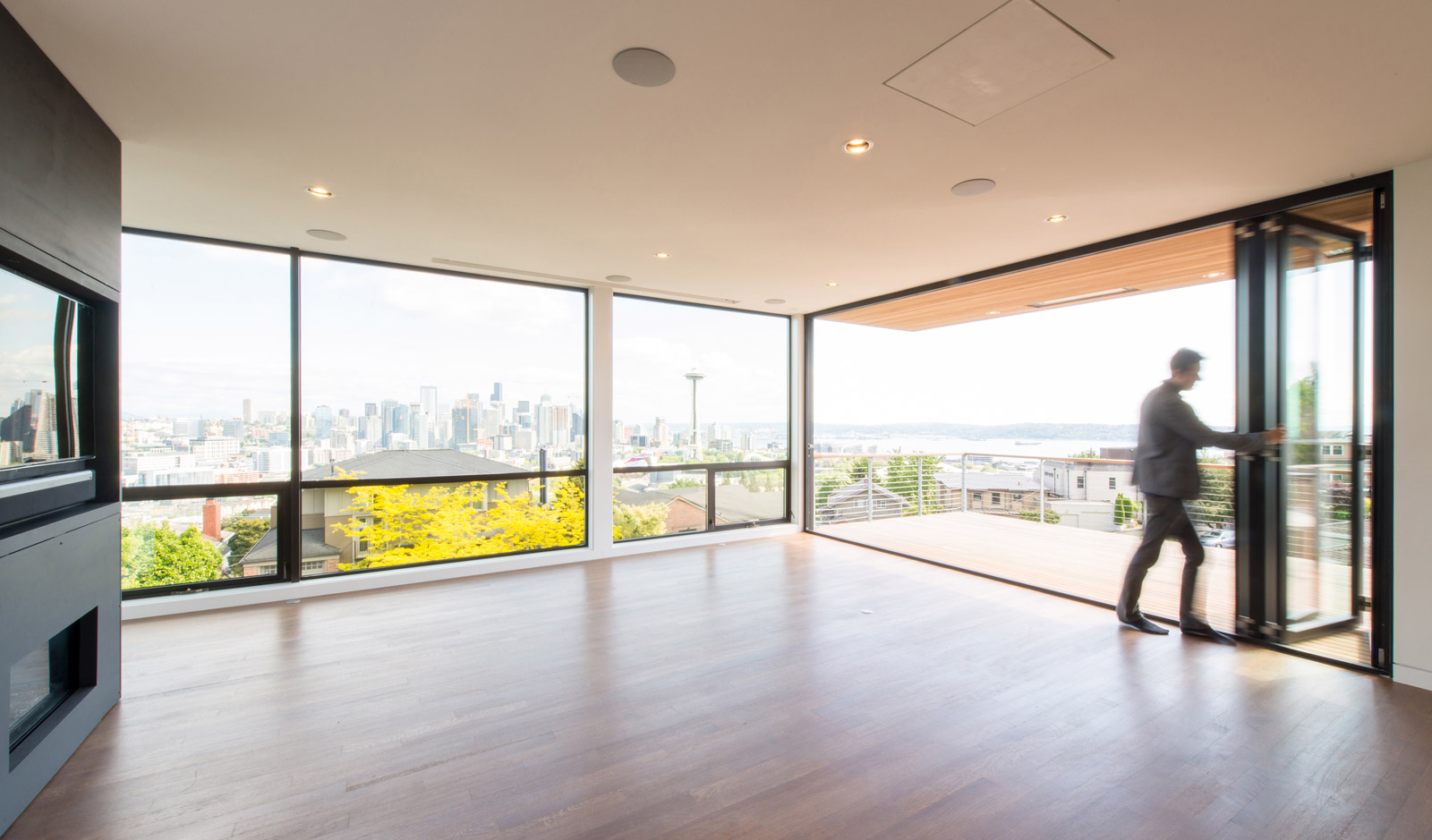
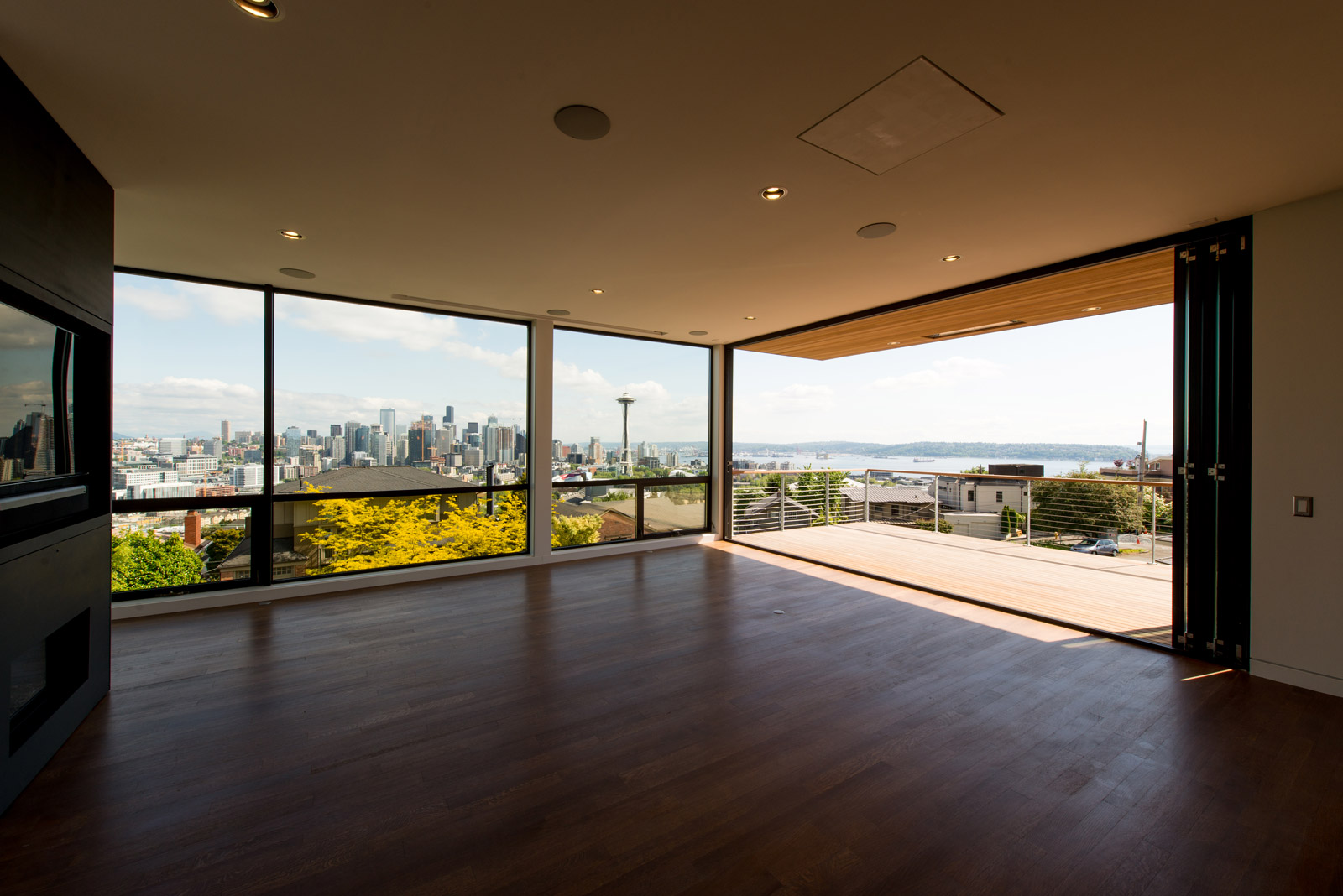
Last but not least, the Raumplus interior system offers big, sliding glass panels that divide spaces up, or in the case below, close off a laundry space adjacent a hallway. The 3 panels in this composition measure at 4’-0” wide by 8’-0” tall and are specified in the S3000 anodized silver with white diffused laminated glass.
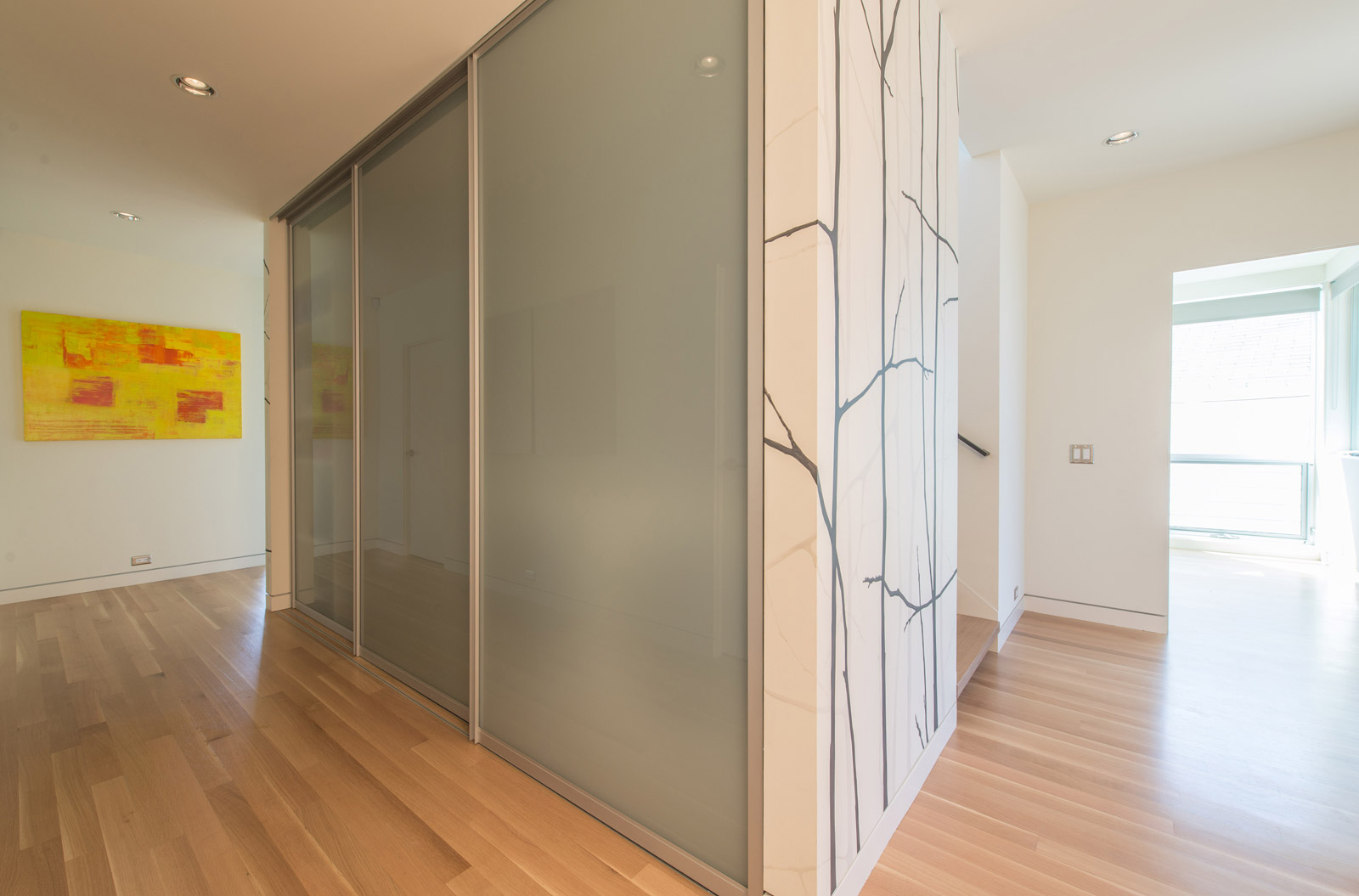
We’re big fans of operable glass walls because of the lifestyle opportunities they offer and you’ll be seeing more of these systems in our current and future work. These systems allow for additional possibilities and applications with each new project so stay tuned for future evolutions.
Cheers from Team BUILD
